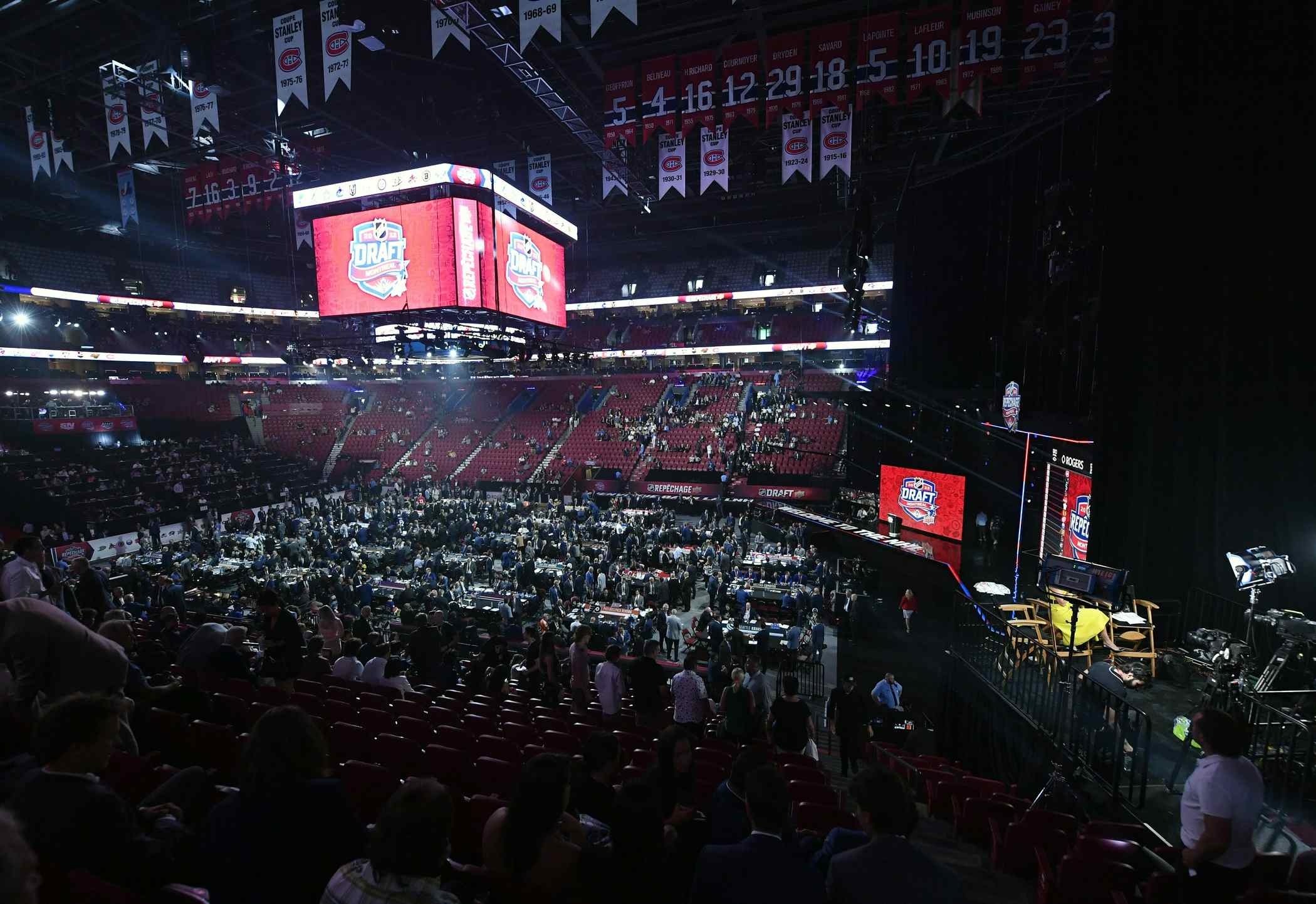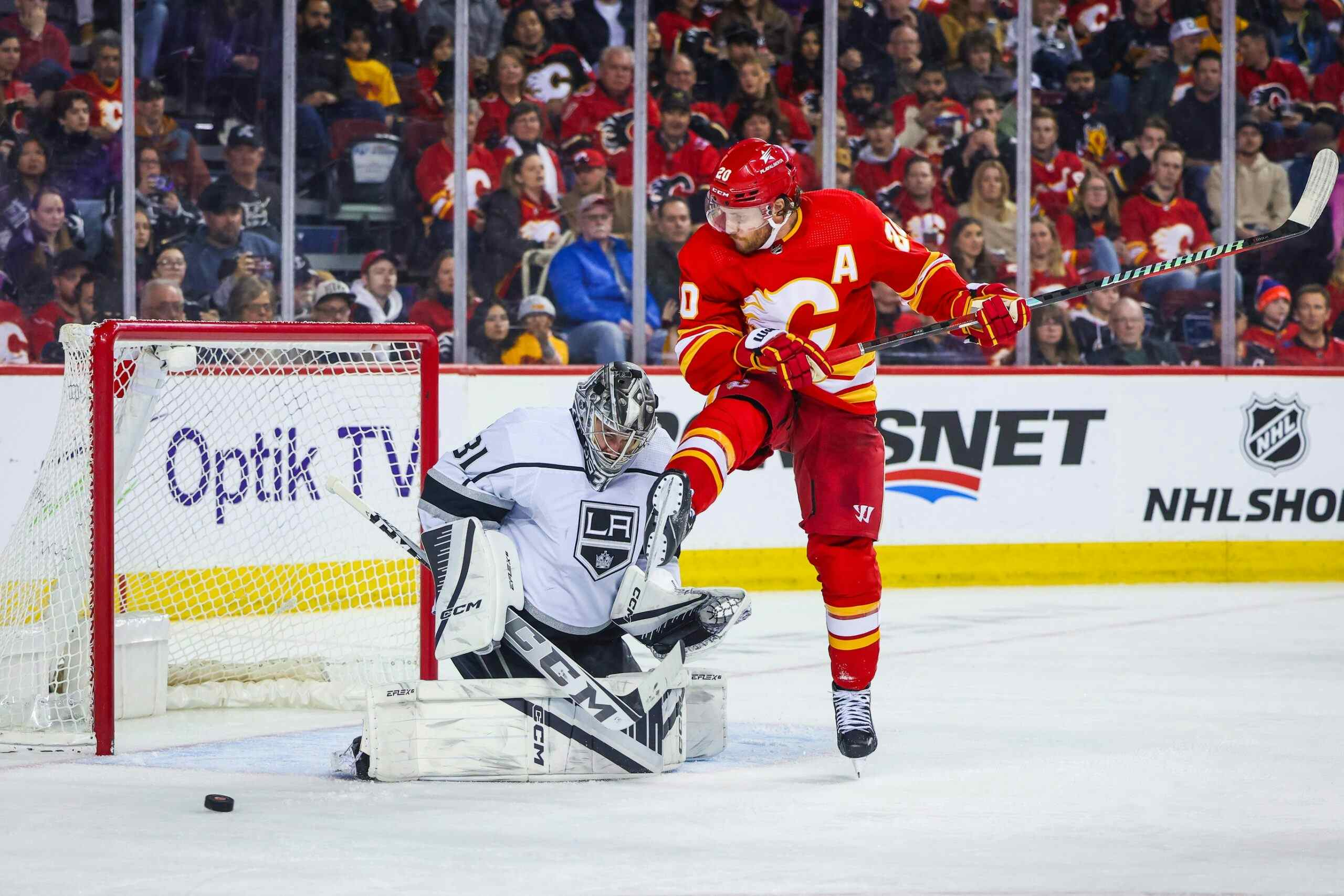Mikael Backlund’s first playoffs cementing his status as a key player, leader
By Ari Yanover
9 years ago“Jonas Hiller was the only reason the Flames had a chance in Game 5” is almost a correct statement. Almost, but not quite. Because while Hiller deserves all the credit in the world for trying to near-singlehandedly drag his team to the second round, there’s a skater who deserves some props.
Props for this series, props for this season, and props for every season he’s spent in Calgary.
Mikael Backlund has been long underrated, to put it nicely, by this city. To some extent, it’s fair: he’s a first round draft pick who never really found a consistent scoring touch, and at 26 years old, may not be the best centre on the team anymore.
But make no mistake: he’s incredibly important to this team. He always has been. Game 5 was a tour de force, though, and not just from Hiller.
About last night
Backlund played 19:26, the second most out of all Flames forwards, and the most out of all centres. He played powerplay, penalty kill, won 55% of his faceoffs. He took six of the Flames’ 21 shots on net.
Let that last part sink in: Backlund may not have scored, but he had the bulk of the tries. Not only that, he had five individual scoring chances. He finished with 65.22% CF at even strength, the best of the Flames in all aforementioned stats.
Every Canuck he played at least three even strength minutes against – and there were 10 of them – he crushed, with his worst performance being 50% against Dan Hamhuis, and his best, 100% against Nick Bonino and Sven Baertschi.
He and Sam Bennett spent 12:37 even strength minutes together. When Bennett was away from Backlund, his CF fell from 66.67% to 37.50%. His other winger, Joe Colborne, fell to 50% away.
Backlund didn’t just drive his line, he drove his team. His one fault was not winning that faceoff against Henrik Sedin that led to the eventual game winner. Otherwise, while Hiller led from his net, Backlund led from literally everywhere else on the ice, and you could see it with every stride he took.
There’s a reason he was out there for the final minute. And he should probably be the extra attacker far more often.
Long under-appreciated
December 1, 2011. The Flames are leading the Columbus Blue Jackets, 3-2. The Jackets pull their goalie. Backlund is out there, defending against the extra attacker. He has the puck in their zone. He takes a poor angle shot at the empty net, trying to be the hero. The puck, of course, does not even come close to reaching his goal, and instead it’s turned over.
Rick Nash gets the game tying goal just as the game’s final minute is starting. The Jackets win it in a shootout.
It’s ages before Brent Sutter trusts Backlund to defend with the opponent’s goaltender pulled. When he does throw him out there, Backlund gets the puck in the corner of the offensive zone. He keeps it between his skates, and as the opposition is hacking away at him, he refuses to budge, instead draining precious seconds off the clock.
He learned pretty quick, and became reliable even quicker.
In his 22-year-old season, he jumped up from averaging 12:05 a game to 15:23. As his responsibility increased, his corsi fell: 56.6% at 5v5 even strength down to 50.8%, but still a +5.4% in CF rel. All as he dropped from a 1.1% relative offensive zone start to -4.4%.
That’s a lot of trust in someone that young. There were just two things wrong: despite already being one of the Flames’ best puck players, he wasn’t scoring enough. Eleven points over 41 games wasn’t enough. The 16 over 32 in the following lockout season was better, but for the longest time, Backlund was the only prospect in a long line of mostly terrible draft picks who had actually made the team. He was supposed to step in and be the new saviour, and while his underlying numbers were screaming he was fulfilling everything that should have been expected of him, his actual scoring was not up to snuff.
Too many expectations piled up for the Flames’ lone young forward, and the constant injuries weren’t helping anything, either.
One of the Flames’ best
The wonders that happen when you give a player a chance.
Jay Feaster didn’t seem to like Backlund much, and so, after going half a point per game in the lockout year, he was re-signed to a quiet two-year, $1.5 million annual average deal. Then Bob Hartley healthy scratched him and had him playing on the fourth line, with guys like Joe Colborne above him.
Sean Monahan got hurt. There was no choice but to play Backlund.
For once, he stayed mostly healthy, and with scoring finally working out for him, grabbed hold of the first line centre job and never let it go. Gone were the sub-10 minute games, replaced with plus-20s. He had a career year with 18 goals and 39 points. His CF rel was +7.3%; he was one of the best centres for his team in the entire league. The only guys above him were Patrice Bergeron and Mikko Koivu. He was above Sidney Crosby. When it was Backlund, Mark Giordano, and TJ Brodie on the ice together, the Flames transformed from the team that ended up picking fourth overall to something freakishly elite.
Abdominal injuries prevented him from picking up where he left off for this season, but he’d already established himself as formidable the previous year, and his spot was waiting for him when he was cleared to play. He welcomed himself back with seven points in a five game streak, including a goal and an assist in his first game.
Backlund’s return allowed Hartley to eventually put Monahan together with Johnny Gaudreau and Jiri Hudler, no longer worried about their conflicting zone starts (the latter two starting primarily in the offensive zone to get themselves into scoring position; Monahan, as the team’s best centre when everyone went down, left starting more in the defensive zone). Backlund’s ZSO rel plummeted to -9.3%, and he was forced to work with Lance Bouma and David Jones: a line on which he did all the heavy lifting.
With Backlund back, the Flames had something resembling centre depth once again, and he was fully up to the task, as the team found themselves never actually fading from the playoff hunt.
The playoffs
Mikael Backlund is a big game player.
We’re talking about a kid – although he’s 26, so maybe not – whose NHL career only got started when the Flames had stopped making the playoffs. They came close in 2010-11, and Backlund was centring Alex Tanguay and Jarome Iginla as the season ended, and looked great there, but they didn’t make it in.
We’re talking about a kid who has shown nothing but an enthusiastic love for Calgary and unwavering belief in the organization (at least publicly) finally, finally, finally getting his chance to play for the Stanley Cup.
And in his first playoff appearance, he’s been his team’s best forward. Other than Monahan and Gaudreau, he’s actually been the Flames’ most heavily played forward; the one game in which he did not receive substantial minutes was Game 2, and look how that turned out: that was the one game the Flames were never really in.
He only has one assist, but his 18 shots lead the way (David Jones is in second, with 13). He has created 13 individual scoring chances, second to just one guy: his linemate, Sam Bennett, whom he’s clicked very, very well with. He’s also ended up playing in significantly less difficult circumstances as a result, with the third and fourth lines taking the really heavy defensive zone starts.
Speaking of third and fourth lines: Michael Ferland has been getting a lot of attention, and rightfully so; everything about him has become a side story to these playoffs, from his background to his hits to his feud with Kevin Bieksa. And Ferland has, for the most part, been good.
But it really has been Backlund doing much of the work. It’s been Backlund leading the charge offensively. It’s been Backlund who has not been a defensive liability. It’s been Backlund who has been able to play in all situations with ease, and who has established himself as someone you want out there in the game’s final minutes, whether leading or trailing.
Backlund hasn’t drawn attention to himself. He hasn’t caused any drama. If anything, he’s drawn nothing but praise from the opposition he’s tasked with shutting down. He’s been quietly likeable, and very, very good at his job along the while.
What’s next?
Win Game 6, obviously.
He’s confident, not cocky. He’s not bragging about how they’re going to win, he’s just calmly stating what he truly believes is going to happen (and what he, himself, knows he can make happen).
And if it comes true, then a trip to the second round for the first time in 11 years is what’s on the table.
When the playoffs inevitably end, Backlund needs a contract extension. Preferably one at reasonable cost and long-term. You’ve gotta think he continues to mentor Bennett next season, and is key for him until Bennett makes the shift to centre.
When that happens, Backlund is your third line guy, which honestly, may be the role best suited for him. He has top six talent, but he’s just never been able to put his scoring touch together; even now, with him playing such big minutes and being a force offensively, he has just one assist to show for it. But he excels at the defensive side of the game.
Just think: you’ve got two high power guys in Monahan and Bennett as the top two centres on this team, and Backlund calmly holding down the fort on the third line, immediately ready to step in to a top six role should injuries or a slump necessitate it.
Mikael Backlund is so, so important to the Flames. He always has been. And with the stakes at their highest, he’s only further emphasized that. He reminds me of Craig Conroy in a few ways, from general versatility to leadership qualities. Never let him go.
Recent articles from Ari Yanover





